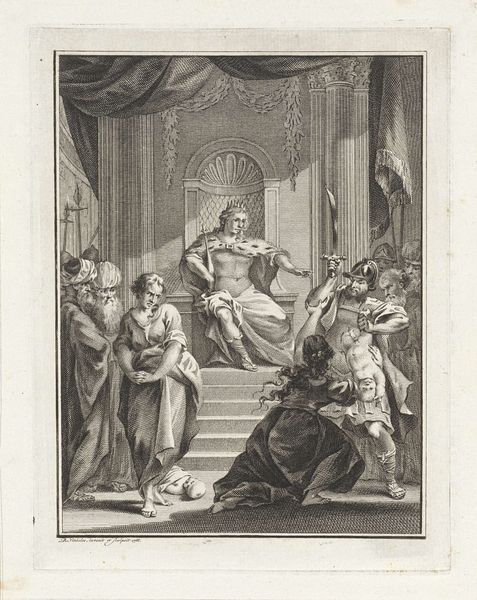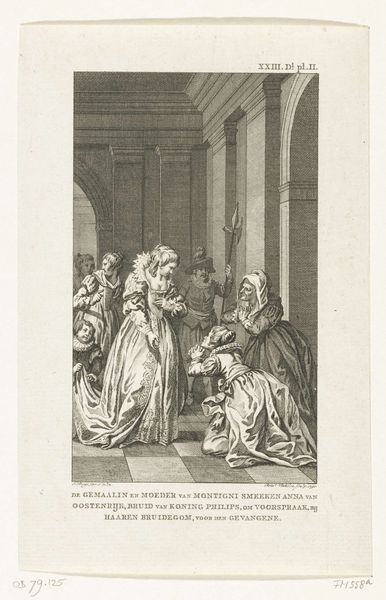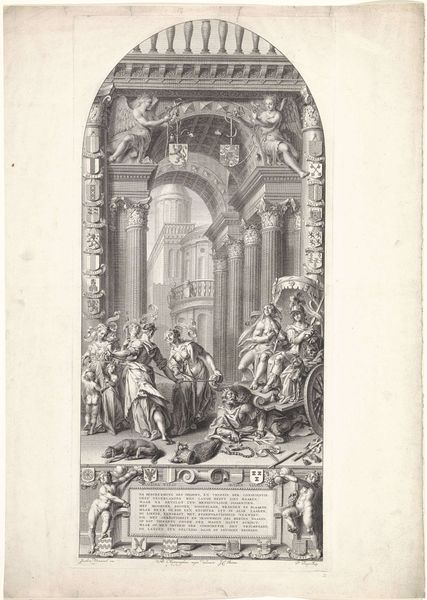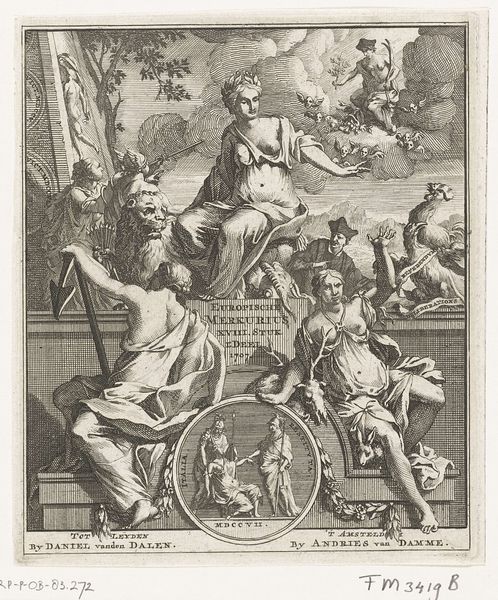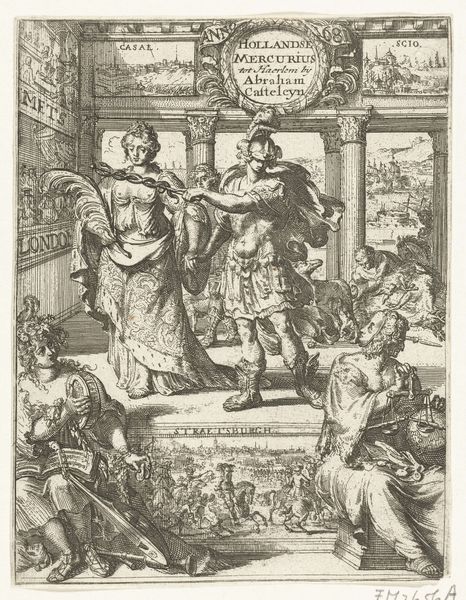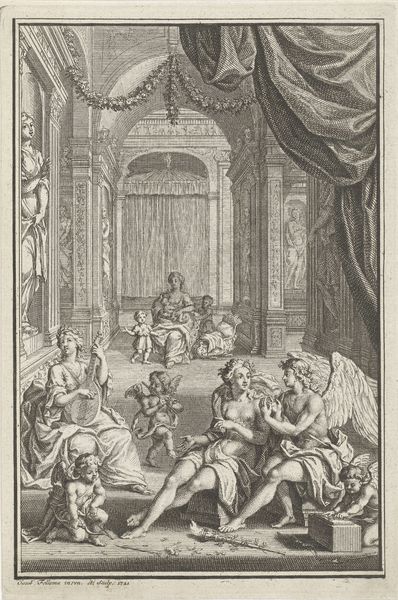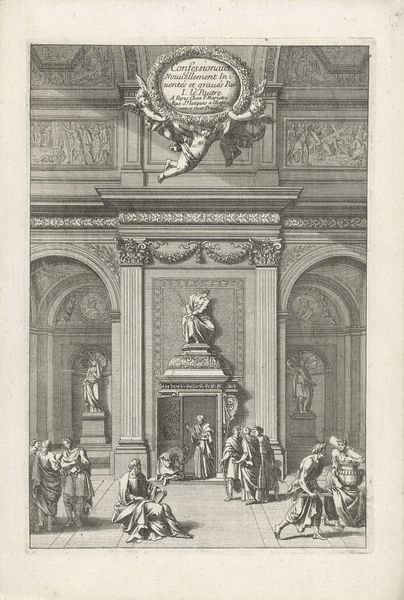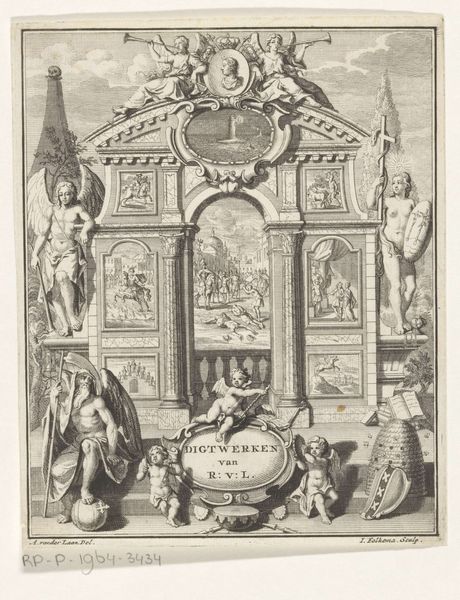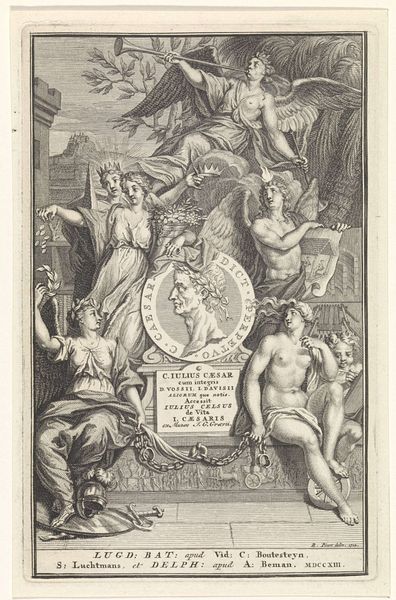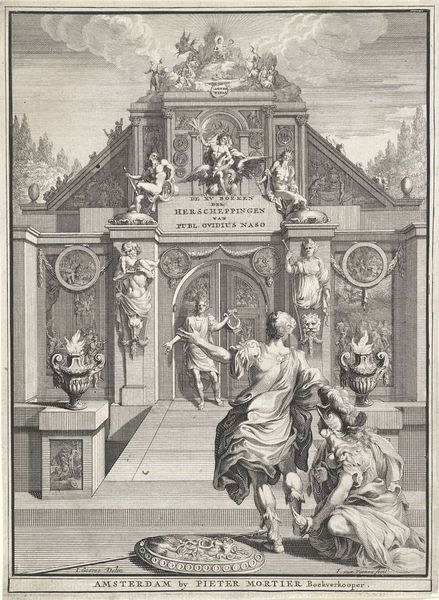
engraving
#
portrait
#
baroque
#
figuration
#
history-painting
#
engraving
Dimensions: height 162 mm, width 102 mm
Copyright: Rijks Museum: Open Domain
Editor: This is “Penningkabinet met Mercurius en Juno,” a 1717 engraving by Andries van Buysen the Elder, housed here at the Rijksmuseum. I’m really struck by how theatrical the whole thing feels; the figures are almost posed on a stage. What leaps out at you when you look at this work? Curator: Ah, a stage indeed! I think you’ve nailed it. It is a rather grand performance. This isn’t just about displaying coins; it’s about power, knowledge, and maybe a wink at vanity. You see how Juno and Mercury are presented in such a classical setting. Almost as if it were a history painting. There’s the hint of scholarly pursuit mixed with mythological symbolism that reminds me of Baroque opera. Editor: Right! All of that is on display. Do you think the coins themselves are significant, or are they mostly a symbol of wealth? Curator: Ooh, a tantalizing question! It’s definitely both, isn't it? In this period, coins weren't just money. They were historical documents, miniature sculptures reflecting empires, and even gossip whispered in precious metal. Imagine flipping through them like one would use a weighty, yet illustrated history book! Editor: I never thought of them that way! It makes this image much more complex. I think I get the artist’s message, in a nutshell, is that learning can happen when beauty and usefulness intersect. Curator: Beautifully put. This little engraving just proves that the smallest artwork can contain the grandest ideas, no?
Comments
No comments
Be the first to comment and join the conversation on the ultimate creative platform.


